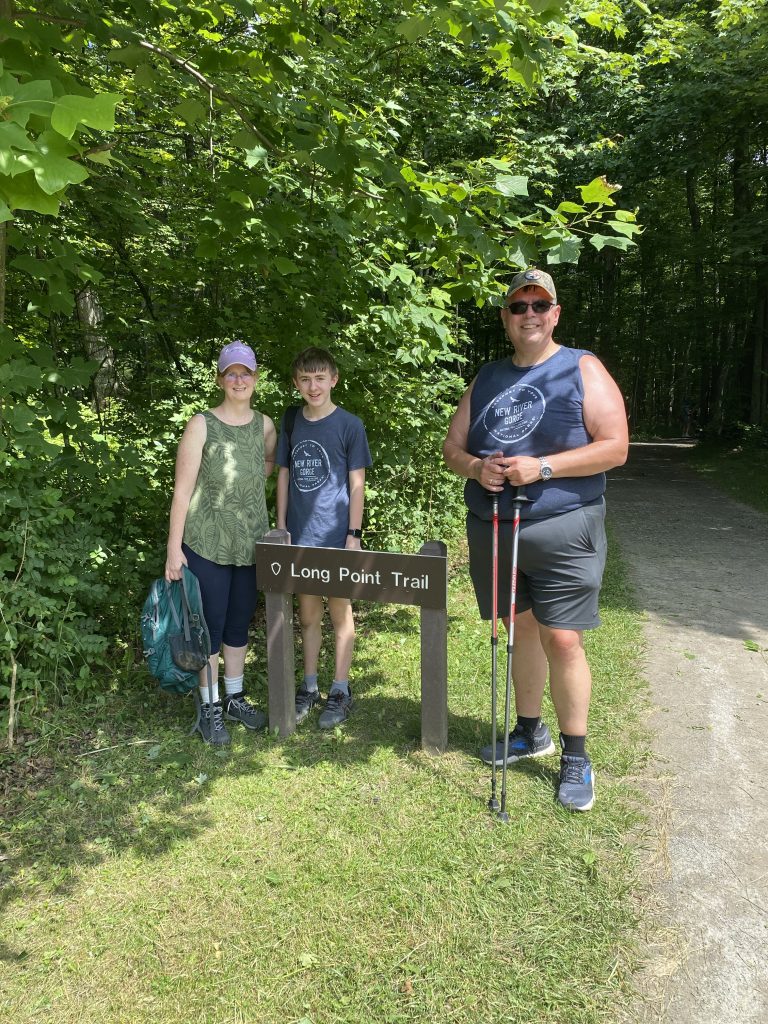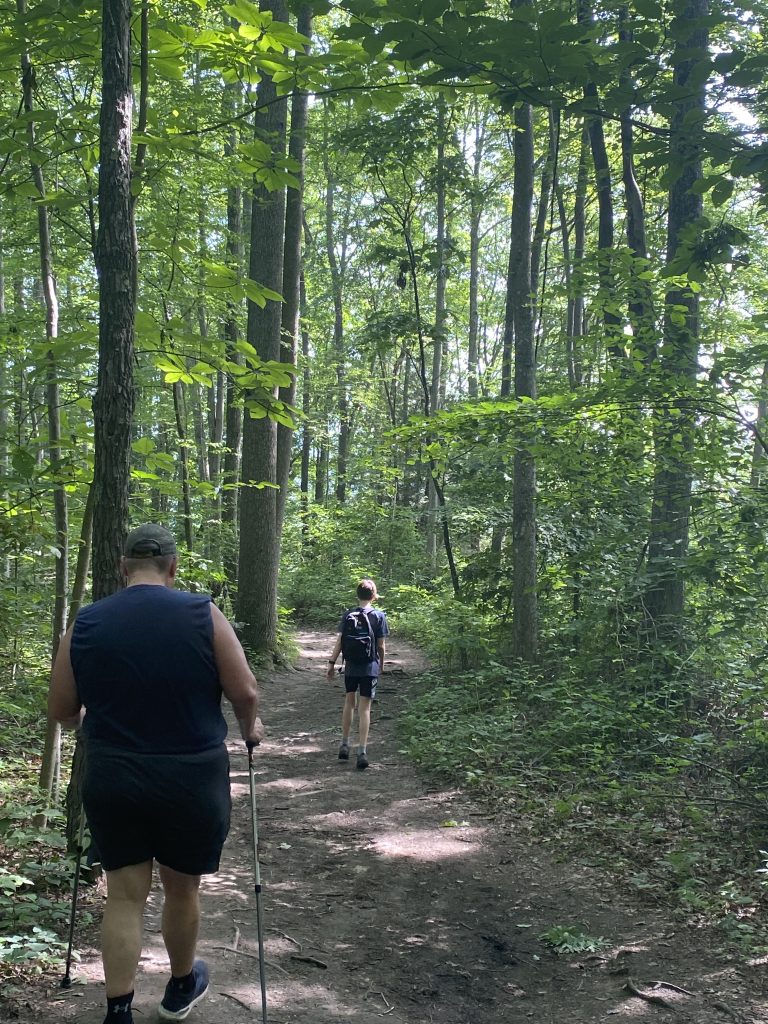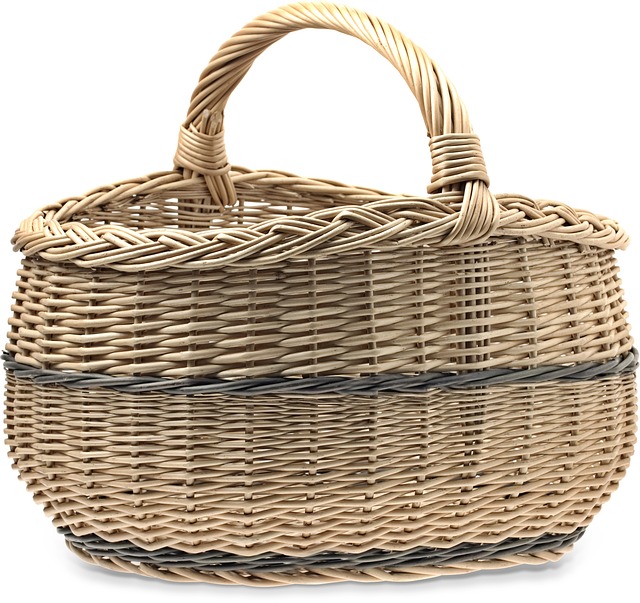Walking For Wellness
This post may contain affiliate links. View our disclosure policy here.
Walking for wellness is beneficial, doesn’t have to be hard and is a low cost cardiovascular exercise. Movement matters and walking is one of the best ways to do that! Let’s find out why movement matters, what the benefits are to walking, and how to add walking for wellness to your busy day!
Walking For Wellness: Why Movement Matters
I assume you are here because wellness matters to you. If you have been reading this blog, you know it covers an assortment of wellness topics to provide you with tools to put into your own wellness basket. Topics covered include nourishment, mind, rest, simplicity and MOVEMENT! Our bodies were beautifully designed by our wonderous creator and we need to take care of them. Furthermore, our bodies were designed for physical activity. We are not sloths. They are interesting creatures, but I don’t want to be one. Do you?

Movement helps maintain proper functioning of our body’s systems, organs, and our overall physical, mental, and emotional well-being. Our bodies’ movements release endorphins and other ‘feel-good’ chemicals which help reduce stress, anxiety and depression. Additionally, movement helps strengthen muscles, bones, and joints, which can improve our balance, coordination, and over physical function.
Regular physical activity leads to optimal health, reducing our risk of chronic diseases such as heart disease, diabetes and even some forms of cancer. Movement helps us maintain healthy weight, improves immune function, keeps lymph moving, and can improve sleep quality.
While regular movement assists in all the things I mentioned above, lack of movement can lead to a wide range of negative health outcomes you don’t want, including muscle weakness, loss of bone density, poor posture (leading to other ailments), and decreased flexibility as well as increased risk of chronic disease.
In summary, movement is vital for optimal health because it supports our physical, mental, and emotional well-being, helps to reduce our risk of chronic disease, and maintains proper functioning of our body’s systems and organs. It’s time to discuss the benefits and why we should be walking for wellness!
What are the Benefits of Walking?
Walking is a popular form of exercise worldwide. I’m guessing it’s because it’s not only beneficial for us health-wise, but doesn’t really require special skills or expensive equipment (except perhaps a good pair of walking shoes). But let’s talk about those sensational benefits!
Cardiovascular Health
Walking improves cardiovascular health. By walking regularly, your risk of heart disease and stroke are reduced. The American Heart Association has reported that walking just 150 minutes a week (roughly 30 minutes a day) can lower your risk by up to 35% as walking improves circulation, lowers blood pressure, and reduces body inflammation.
Weight Management
Weight management is not a primary content focus of My Wellness Basket. The main reason is that when we address other health needs for optimal health, the weight management is a process that will happen on it’s own (along with seeing a functional medicine doctor to address any additional factors involving hormones or other underlying factors for some individuals). Movement by means of walking is one example. Walking is a low-impact exercise that helps burn calories and reduce body fat. Therefore it is an effective tool for optimal health which includes weight management.
Immune System
Regular walking boosts our immune system, reducing the risk of illness and disease. There are several ways it contributes to the boosting of the immune system. The first is by improved circulation allowing immune cells to travel through the body more efficiently. Walking also can stimulate the lymphatic system, which helps to remove waste and toxins from the body. Daily walking can also enhance sleep quality, lower stress impact on the body, and reduce inflammation. All of this can help to keep the immune system functioning properly.
Bones and Joints
Because walking is a weight baring exercise, it works well to improve bone density and reduce the risk of osteoporosis. This is really important for those of us worried about bones becoming more brittle as we age. Walking can also help keep joints moving and lubricated. This is one reason I make walking part of my morning routine. I can feel those muscles and joints loosening up and I feel so much better after getting in about 15 minutes of walking. It definitely improves my range of motion. Walking can also reduce joint pain because the movement promotes blood flow and reduces inflammation. It can also help improve body posture and mechanics, reducing the stress on the joints.
Increased Energy
This type of movement, though we may feel tired BEFORE getting ourselves up out of the chair to do it, can actually help INCREASE energy levels and reduce the general feeling of fatigue. By boosting circulation and releasing endorphins, it helps increase energy and improves mood. Walking can help to increase our metabolism, which is the rate at which our body burns calories. This can help to provide a steady source of energy throughout the day. Thus, if you start walking regularly, even for ten minutes a day, you will increase energy over time to help you have the energy to lengthen that walk to 15, then 20 and eventually 30 minutes or more.
Balance and Coordination
Our balance and coordination can be improved with walking in several ways. First, it strengthens our core muscles which are needed for balance and stability. Second, walking increases flexibility and range of motion in the joints. Third, walking enhances spatial awareness. When walking outside or in unfamiliar environments. walking can help to enhance spatial awareness, which is important for maintaining balance and avoiding obstacles. Lastly, walking can improve proprioception. Proprioception is your body’s ability to sense its position in space. Again, walking outdoors on uneven surfaces or changing terrain can help improve proprioception, which can in turn improve balance and coordination.
Lower Risk of Injury
Because walking is a low-impact exercise which puts less stress on your joints, bones, and muscles, it makes for a safer option especially for people with arthritis, osteoporosis, or other types of joint and/or bone conditions.
Adding Walking to Your Busy Day
A lot of us are busy. And you may think there’s no way you can add 30 minutes of walking to your day. Maybe you can’t. Not all at once. But walking is a fairly easy method to incorporate movement into a daily routine. Please believe me: I understand busy. There’s so many things to do in a day. Long work hours. Preparations of meals. Laundry. Spending time with kids and family and friends. Other responsibilities. While it seems we can’t afford the time, you really can’t afford not to. Let’s think about how to make it work.
Set an Appointment
Somehow we fit in appointments on our calendar for dentists, eye doctors, chiropractors, hair cuts and other events. How about adding walking to your calendar too just like any other appointment? If it’s written in, you are more likely to make time for it.
Make It Routine
Adding it to something already in your daily routine helps. Make it a part of your morning routine, or something you do right after lunch or dinner. The more effort you put into just making it part of your daily routine, the easier it becomes. If you can’t fit in 30 minutes all at once, break it down (see below). Try 5 or ten minutes. Eventually, you may find ways to do more. But Get started!
Break It Down
Again, if you can’t fit in 30 minutes all at once, break it down. Remember how we spoke of imperfect progress? 5 minutes is progress if what you are doing now is zero. So start with 5 at some point in your day. Whatever time is easiest. Morning? Lunch time? After dinner? Make that a daily habit. Then try 5 minutes twice a day, even if that’s only a couple times a week. Form small habits. Make it larger over time.
Multi-Task
Remember your walking or movement doesn’t need to be done all at once. Ideally it’s nice to get in at least 10-15 minute walks a day, but sometimes we need to be creative. Heading out the door to work? How far is it? Is it walkable? Can you park farther away and walk from there? Can you park the car in the farthest spot of the grocery store to increase your walking when grocery shopping? Take a few minutes to do an extra lap or two around the store before or after you get your groceries. Can you walk while you make those important phone calls? Can you walk on the treadmill while you watch your favorite show?

Make It Enjoyable
Sometimes it’s the motivation that holds us back. We think, wow, walking seems so boring. Well, I guess that depends on your location. Change up where you take your walks if you can. Go to a park or a hiking trail when time allows. Other ways to make it more enjoyable (and another way to multi-task) is listening to music, a book, or a podcast while you are walking. When I walk on the treadmill, that DOES seem boring – so that’s when I watch a show on Netflix, just propping my phone up on the treadmill screen. Oh, and I hide the clock on the treadmill. When the clock is covered, I focus on the show and it doesn’t seem to last so long!
Find a Walking Buddy
Sometimes we just need that extra motivation. Find a friend who already walks daily or one that needs just as much if not more encouragement than you do. Walking for wellness is something you can do together. Walk together. Encourage one another.
Other Ways to Add Movement To Your Day
I firmly believe we ALL need to walk in our day. But I get that there are days that you can’t get all the walking in that you want. Additionally, walking is not the only movement we need. That’s why ,in my original post on movement, I started out by talking about ten ways to get movement in your day. Check it out!
Inexpensive Supplies (mostly)
Walking really doesn’t necessitate expensive supplies. There’s no major sports equipment or special clothing you need to wear. That’s a big bonus. I have found, however, that proper shoe wear really does help! It feels better and is better for the alignment of our body – leading to an even safer and more pleasant activity. We are all different, but after trying a lot of brands, I found Vionic to really make a difference for me. I’m ordering my next pair on Amazon today!
Walking For Wellness : YOU CAN DO THIS!
Adding movement to your day is really essential for optimal health. I can’t stress this enough. I know it can seem overwhelming before you start. Remember, it’s okay to start small and slowly, over time, increase your goal. Imperfect progress is still progress. If you can’t do it every day, walking 2-3 times a week is better than nothing! 5 minutes a day is better than nothing. Take the opportunities you can and work it in. Start where you are. Build on it when you can. But make walking for wellness a priority!
Come back and let me know how you are doing!








My husband started to make 10 000 steps every day. I love this new habit, today we walked in the forest and our sons were so happy. I’m glad spring is finally here, more opportunities for walking.
That’s so awesome and I’m glad there’s a forest near you! I love walking in the woods – so refreshing and so much to see!